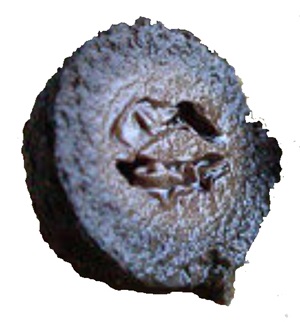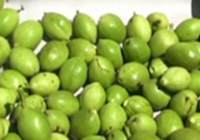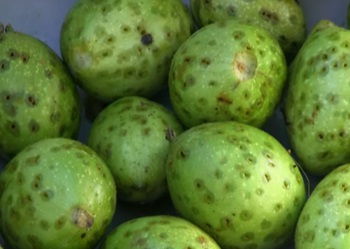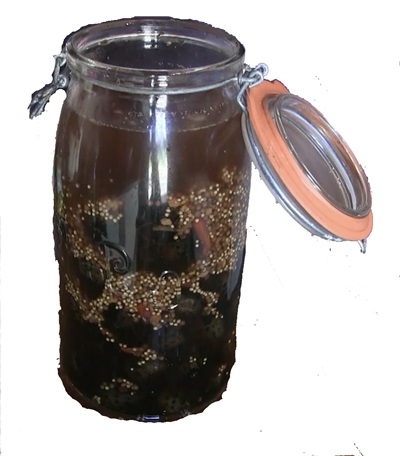
Looking for Make your own Pickled Walnuts, an English Treat! in 2025? Scroll down this page and follow the links. And if you bring home some fruit or vegetables and want to can, freeze, make jam, salsa or pickles, see this page for simple, reliable, illustrated canning, freezing or preserving directions. There are plenty of other related resources, click on the resources dropdown above. If you are having a hard time finding canning lids, I've used these, and they're a great price & ship in 2 days.
If you have questions or feedback, please let me know! There are affiliate links on this page. Read our disclosure policy to learn more.
Make your own Pickled Walnuts, an English Treat!
 Make your own Pickled Walnuts, an English Treat!
Make your own Pickled Walnuts, an English Treat!
I was lucky enough to have lived in England for years in my 30's. Now, while many folks (including the English) make fun of English cuisine, there are some really delicious treats there. Among these are, pickled walnuts. They are great with hors d'oeuvres, meats and cheese plates, even in cooking. They have a sweet, tart pickle taste to them, and a soft but firm texture - much like the firmest cucumber pickle you've ever had, but not hard!
Pickling walnuts is quite easy.
Here's what you need to know, upfront!
- Think Green - You must be able to get the walnuts BEFORE they ripen. They must still be green, soft and before the shell starts to form inside. This is usually June and July in most of the northern Hemisphere, or December and January in the Southern Hemisphere.
- Walnuts stain everything - Walnut shells are used to make ink. They will stain everything; your hands, plastic containers, you name it. Wear waterproof gloves (latex, vinyl, etc.)
- It's a Simple Process - pick green walnuts, wash and prepare then, brine them, pickle them

Ingredients
- Green walnuts, any quantity
- 5% vinegar, typically white vinegar but you could use apple
- Salt - pickling salt, sea salt or kosher salt. Any salt that is NOT iodized.
- Water
- Pickling spice - about 1/4 cup per 10 lbs of walnuts
Equipment
- Mixing bowl - glass or plastic works well, but platic may stain.
- Large jars - quart, half-gallon or gallon
Directions, step by step
It's really simple!
Step 1 - Get the green walnuts
They must be unripe and green, before the hard shell inside starts to form. Or rather, before it starts to become hard.
This is usually June to early July.
They aren't sold in stores, you must have access to a living walnut tree!
Step 2 - Perforate the walnuts with a fork
Just take a fork and punch holes in the skin of the walnut as shown in the photo. You don't have to go deep or apply a lot of pressure. This is just to let the pickling liquid in.
Step 3 - Wash the walnuts, cut off the ends
Remember, you will want to wear waterproof gloves, the liquid, which starts out clear or greenish, will turn black and stain everything, including your skin.
Once you harvest the green walnuts, you wash them in water and then cut of 1/8 to 1/4 inch from both ends (stem and opposite) of the walnut.
Step 4 - Brine the walnuts
Simple: just let the walnuts soak in a salt solution (1 lb or 1 cup per gallon of water) for 1 week.
After a week, drain and rinse the walnuts and pur in fresh brine. Alone them to rest for another week.
By now, the walnuts have turned black.
Step 5 - Drain and rinse
Just discard the salt water, and rinse the walnuts
Step 6 - Prepare the vinegar pickling solution
The pickling solution is 50% water, 50% vinegar (5%) and 1/4 cup of pickling spice per gallon of solution. Heat the spices and liquids until simmering on the stove.
Step 7 - Pickle in the fridge for at least 2 or 3 weeks
Combine the walnuts and hot pickling solution in a large glass jar. Just pop the jar in the fridge and let it rest for at least a week. Thereafter, keep the walnuts stores in the fridge. There is no lab-tested canning recipe, so we can't say what the processing conditions would be for safe home canning of pickled walnuts.
Farm markets and roadside stands
Venues: Farms, Wineries, Orchards for your event, wedding or party
Winery tours and wine tastings
Horse rides, stables, lessons, trails
Maple Syrup farms and sugarworks
Bed & Breakfasts on Farms, Wineries, Ranches and Orchards
Canning Books, Supplies and Accessories
These are my favorite essential canning tools, books and supplies. I've been using many of these for over 50 years of canning! The ones below on this page are just the sampling of. my preferred tools. but you can find much more detailed and extensive selections on the pages that are linked below.
- Vacuum Foodsealers for freezing, dried foods, and refrigerated foods - the FoodSaver line
- Selecting a KitchenAid mixer and attachments for home canning
- Steam Juicers
- Strainers, pit removers, seed-skin-stem removers, jelly strainers, etc. All types, makes and prices (from $19 to $350)
- Cherry pitters reviews, prices and ordering
- Food dehydrators - easy and fast to dry your own fruits, veggies, sun-dried tomatoes, etc.
The All New Ball Book Of Canning And Preserving: Over 350 of the Best Canned, Jammed, Pickled, and Preserved Recipes Paperback
This is THE book on canning! My grandmother used this book when I was a child.; It tells you in simple instructions how to can almost anything; complete with recipes for jam, jellies, pickles, sauces, canning vegetables, meats, etc.
If it can be canned, this book likely tells you how! Click on the link below for more information and / or to buy (no obligation to buy)The New Ball Blue Book of Canning and Preserving
Canning and Preserving for Dummies by Karen Ward
This is another popular canning book. Click here for more information, reviews, prices for Canning and Preserving For Dummies
Of course, you do not need to buy ANY canning book as I have about 500 canning, freezing, dehydrating and more recipes all online for free, just see Easy Home Canning Directions.
Home Canning Kits
See here for related tools, equipment, supplies on Amazon See here for related tools, equipment, supplies on Amazon
I have several canners, and my favorite is the stainless steel one at right. It is easy to clean and seems like it will last forever. Mine is 10 years old and looks like new.
The black ones are the same type of standard canner that my grandmother used to make everything from applesauce to jams and jellies to tomato and spaghetti sauce.
This complete kit includes everything you need and lasts for years: the canner, jar rack, Jar grabber tongs, lid lifting wand, a plastic funnel, labels, bubble freer, It's much cheaper than buying the items separately. It's only missing the bible of canning, the Ball Blue Book.
You will never need anything else except jars & lids (and the jars are reusable)!
The complete list of canners is on these pages:
- Water bath canners - Good for acidic foods, like applesauce, pickles, salsa, jams, jellies, most fruits
- Pressure canners - needed for low and non-acidic foods, like canned vegetables (corn, green beans, etc), and meats
- Canners for glass top stoves if you have a glass or ceramic stove
- Canners for induction stovetops
Pressure Canners
If you plan on canning non-acidic foods and low acid foods that are not pickled - this means: meats, seafood, soups, green beans corn, most vegetables, etc., then you ABSOLUTELY must use a Pressure Canner.
Of course, you can use a pressure canner as a water bath canner as well - just don't seal it up, so it does not pressurize. This means a Pressure Canner is a 2-in-1 device. With it, you can can almost ANYTHING.
There are also other supplies, accessories, tools and more canners, of different styles, makes and prices, click here!
Basic Canning Accessories
From left to right:
- Jar lifting tongs to pick up hot jars
- Lid sanitizer / lifter - to remove lids from the pot of boiling water (sterilizing )
- Lids- disposable - you may only use them once
- Ring - holds the lids on the jar until after the jars cool - then you remove them, save them and reuse them
- Canning Jar funnel - to fill the jars
FREE Illustrated Canning, Freezing, Jam Instructions and Recipes
Don't spend money on books. that you don't need to. Almost everything you can find in some book sold online or in a store is on my website here for free. Start with theEasy Home Canning Directions below. That is a master list of canning directions which are all based upon the Ball Bblue book, the National Center for Home Food Preservation and other reputable lab tested recipes. Almost every recipe I present in addition to being lab tested com. is in a step by step format with photos for each step and complete. explanations. that tell you how to do it, where to get the supplies and pretty much everything you need to know. In addition, there almost always in a PDF format so you can print them out and use them while you cook.
[ Easy Home Canning Directions]
[FAQs - Answers to common questions and problems]
[Recommended books about home canning, jam making, drying and preserving!]
Looking for canning equipment and supplies?
Water bath canner with a jar rack
Pressure canners for gas, electric and induction stoves: Presto 23Qt or T-fal 22Qt
Canning scoop (this one is PERFECT)
Ball Blue book (most recent version)
Jars: 8oz canning jars for jams
Find Other types of farms:
Farm markets and roadside stands
Road trips and camping resources
Local Honey, apiaries, beekeepers
Consumer fraud and scams information
Home canning supplies at the best prices on the internet!
Maple Syrup Farms, sugarworks, maple syrup festivals
Environmental information and resources
Farms For Your Event for birthday parties, weddings, receptions, business meetings, retreats, etc.
Festivals - local fruit and vegetable festivals
Get the
most recent version of
the Ball Blue Book
With this Presto 23 quart pressure canner and pressure cooker, you can "can" everything, fruits, vegetables, jams, jellies, salsa, applesauce, pickles, even meats, soups, stews. Model 01781

You can make jams, jellies, can fruit, applesauce, salsa and pickles with water bath canners, like this Granite Ware 12-Piece Canner Kit, Jar Rack, Blancher, Colander and 5 piece Canning Tool Set



